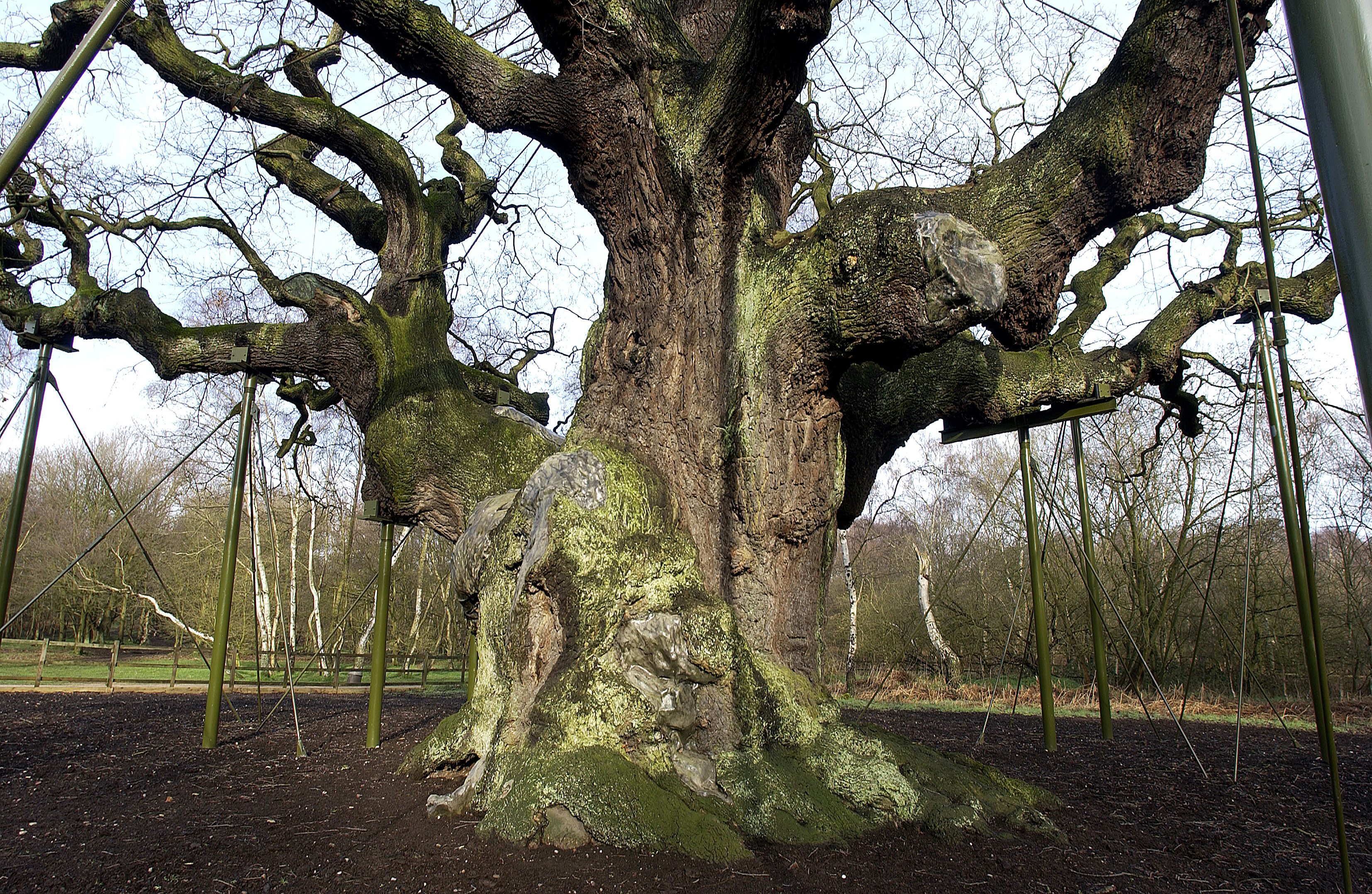Fungi - fruits of the forest
Helen Leaf, 13/11/2020
In this blog, ATI verifier Helen Leaf shares tips on how to identify and recognise fungi that are commonly associated with old and decaying trees, with examples of species that you might find. All of the species here can be recorded when you upload a tree to the ATI. This can be found in the 'fungi' field under 'additional details' when you are adding a tree. All images and content by Helen Leaf.
Fungi have a whole range of habitats and niches. Many appear in the grass, or through leaf litter on the forest floor. Some appear on trees, and it's some of these that I'd like to share with you here.
They're often called bracket fungi, and they tend to emerge from a tree and fan out a little, rather than having a stalk and a top like a typical mushroom. What's interesting to remember, is that the fungus is in the tree all the year round, and may live in the tree for decades or even centuries. What we might see and as the fungus, is more technically the fruiting body of that fungus.
You could think of it as being similar to apples, being fruit of the apple tree and not the tree itself. Both play a part in how the living thing reproduces, apples bearing seeds and being eaten, and fungi producing spores that are carried on the wind.
The rest of the time, the fungus is interacting with the wood inside the tree, recycling and repurposing it.
I've found it really interesting to follow some of the fungi through the season to see how they change.
Chicken of the woods (Laetiporus sulphureus)
This can appear any time from early summer into the autumn. It's a sunny yellow colour when new, and turns sandy and paler as it gets older. It often grows in clusters of wavy fans, sometimes in several places on the same tree. It tends to grow on oak trees.
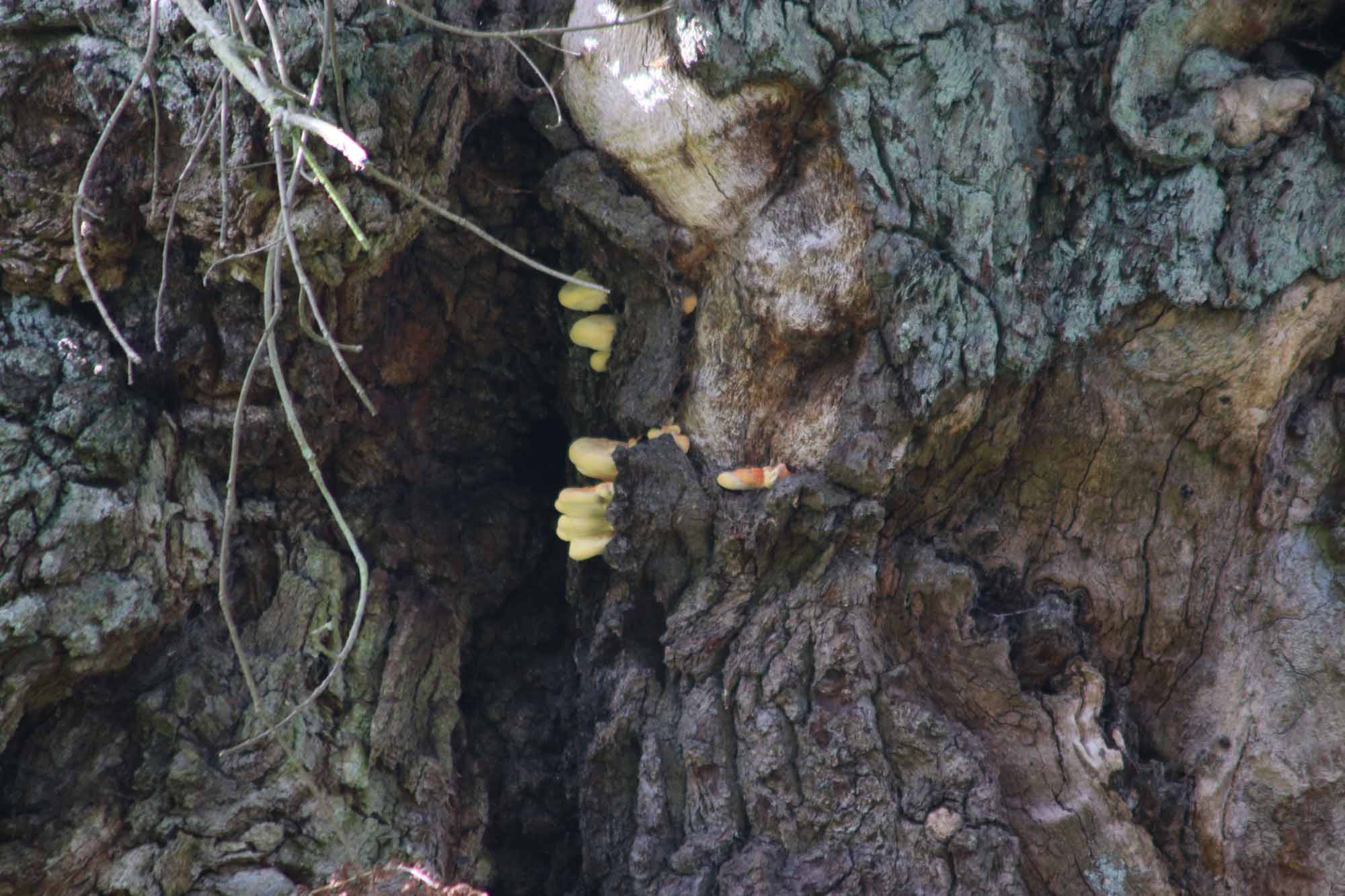
Chicken of the woods just starting to grow in August
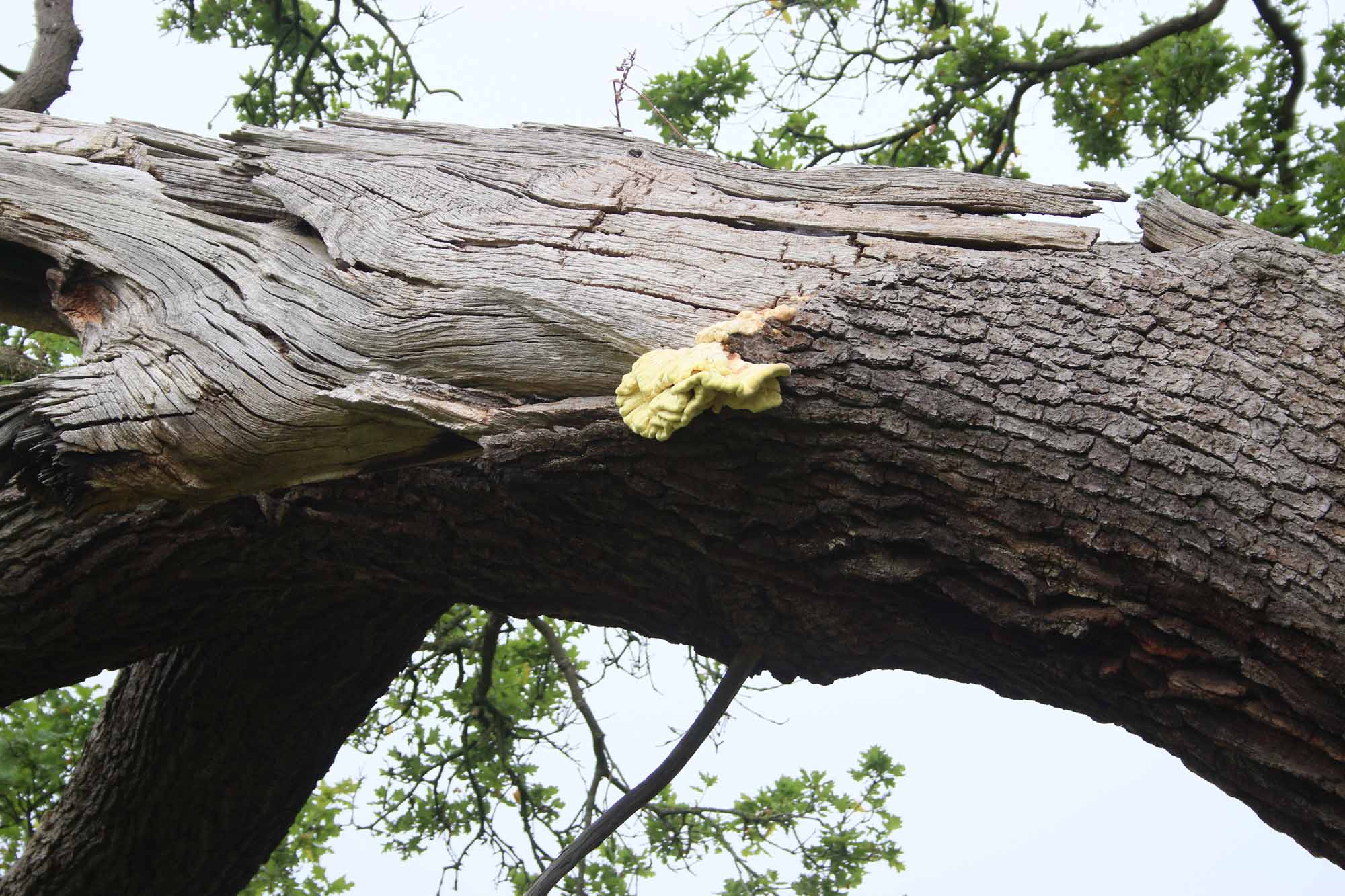
Fresh Chicken of the woods
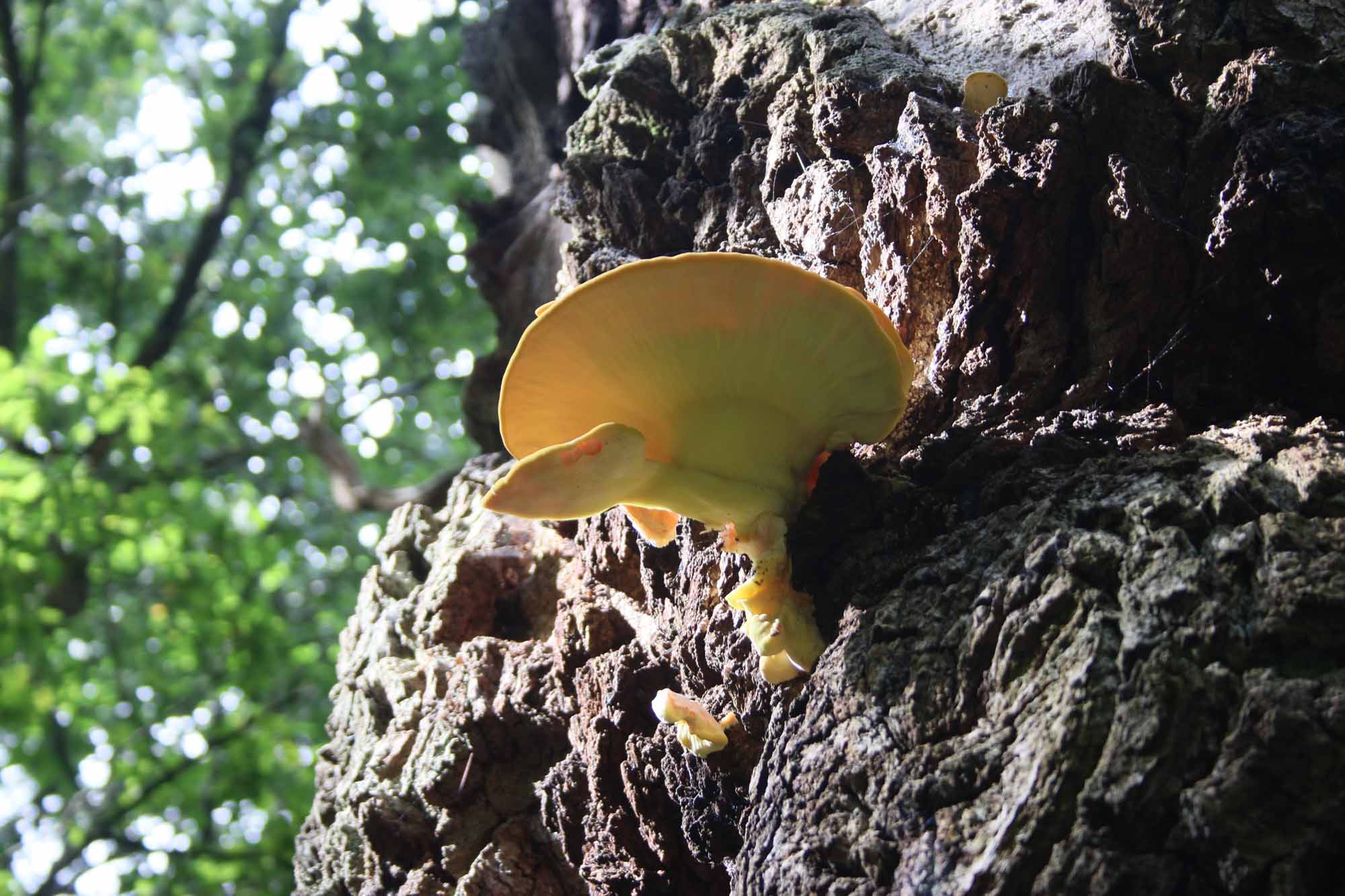
Fresh Chicken of the woods

Chicken of the woods growing on different parts of the same tree

Chicken of the woods growing on different parts of the same tree
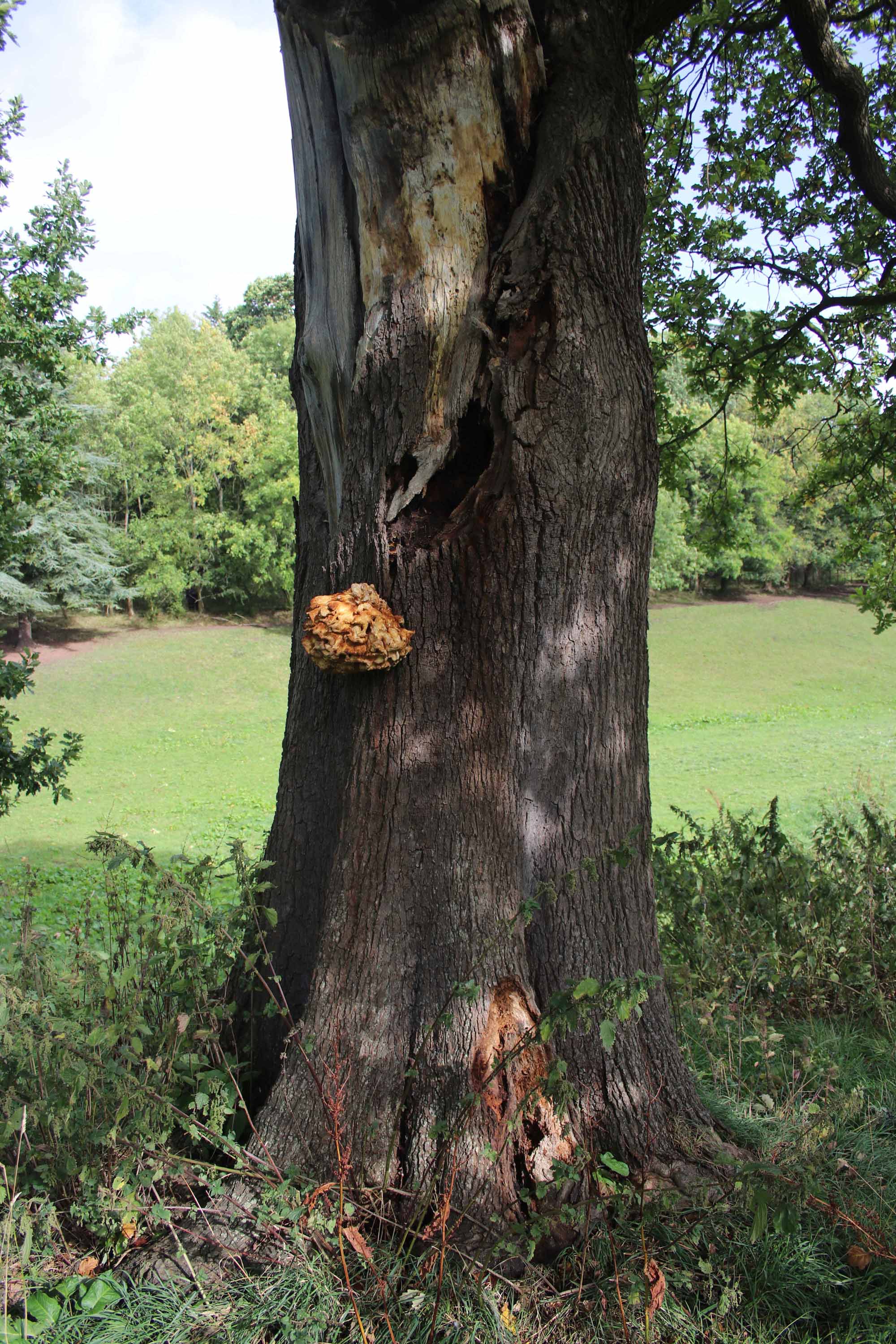
Chicken of the woods as it's getting older, first turning a sandy yellow then a pale cream

Chicken of the woods as it's getting older, first turning a sandy yellow then a pale cream
Beefsteak fungi (Fistulina hepatica)
This usually appears from midsummer to the autumn, starting as a reddish swelling and developing into one or more firm flat brackets, reddish on top and creamy underneath.

Typical beefsteak fungi
It's not always this shape though - sometimes it's wrinkly and rounded, and a tree may have a combination of shapes. Sometimes the fungus exudes wet red droplets. It can appear at different places on the same tree and usually appears at different places from year to year. Often the brackets look 'meaty' and have a fleshy texture similar to steak. As they age, they can become darker, saggy, and slimy.

Rounded and wrinkly shaped beefsteak with droplets
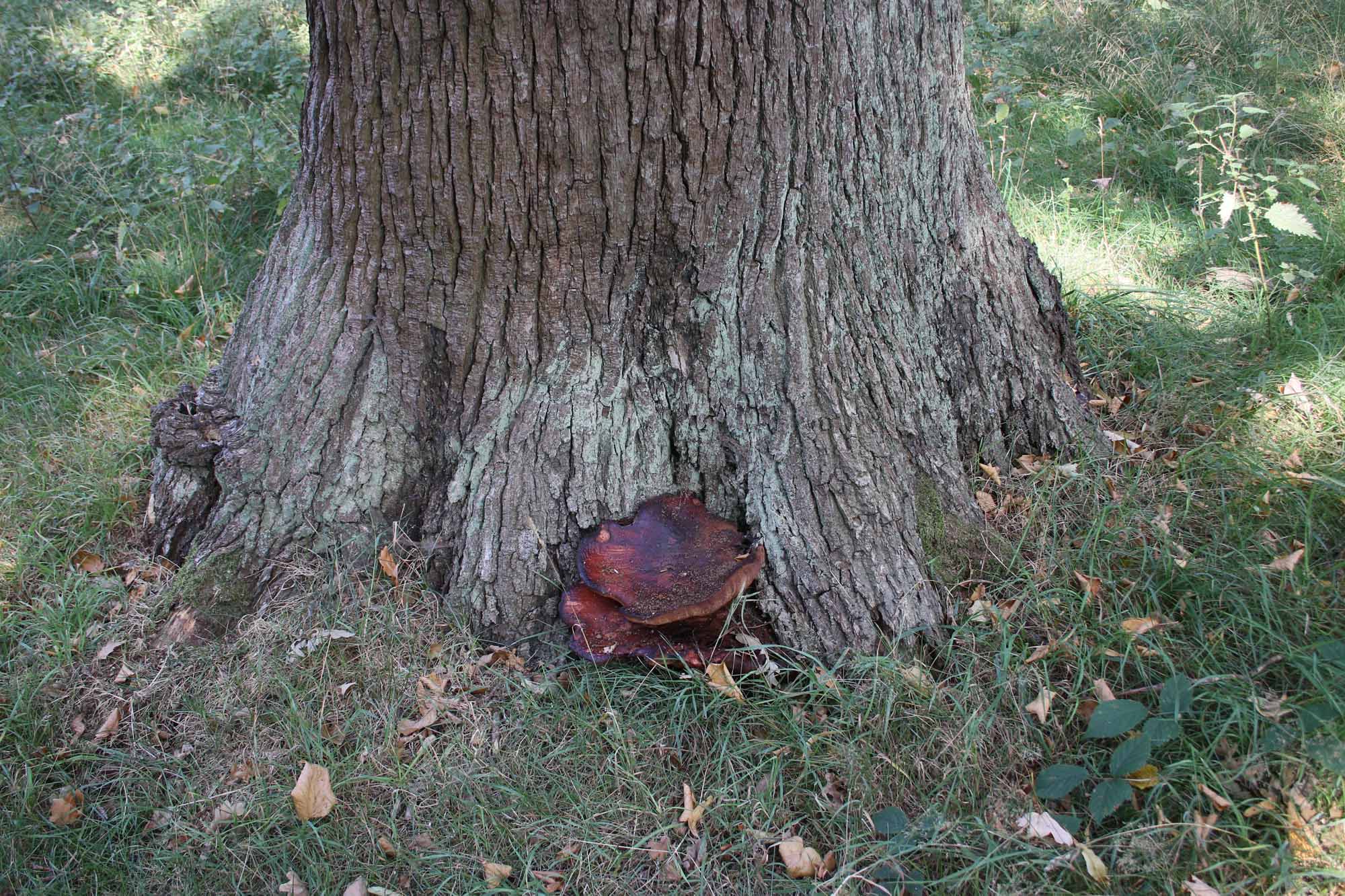
The fungus can appear at different places on a tree...
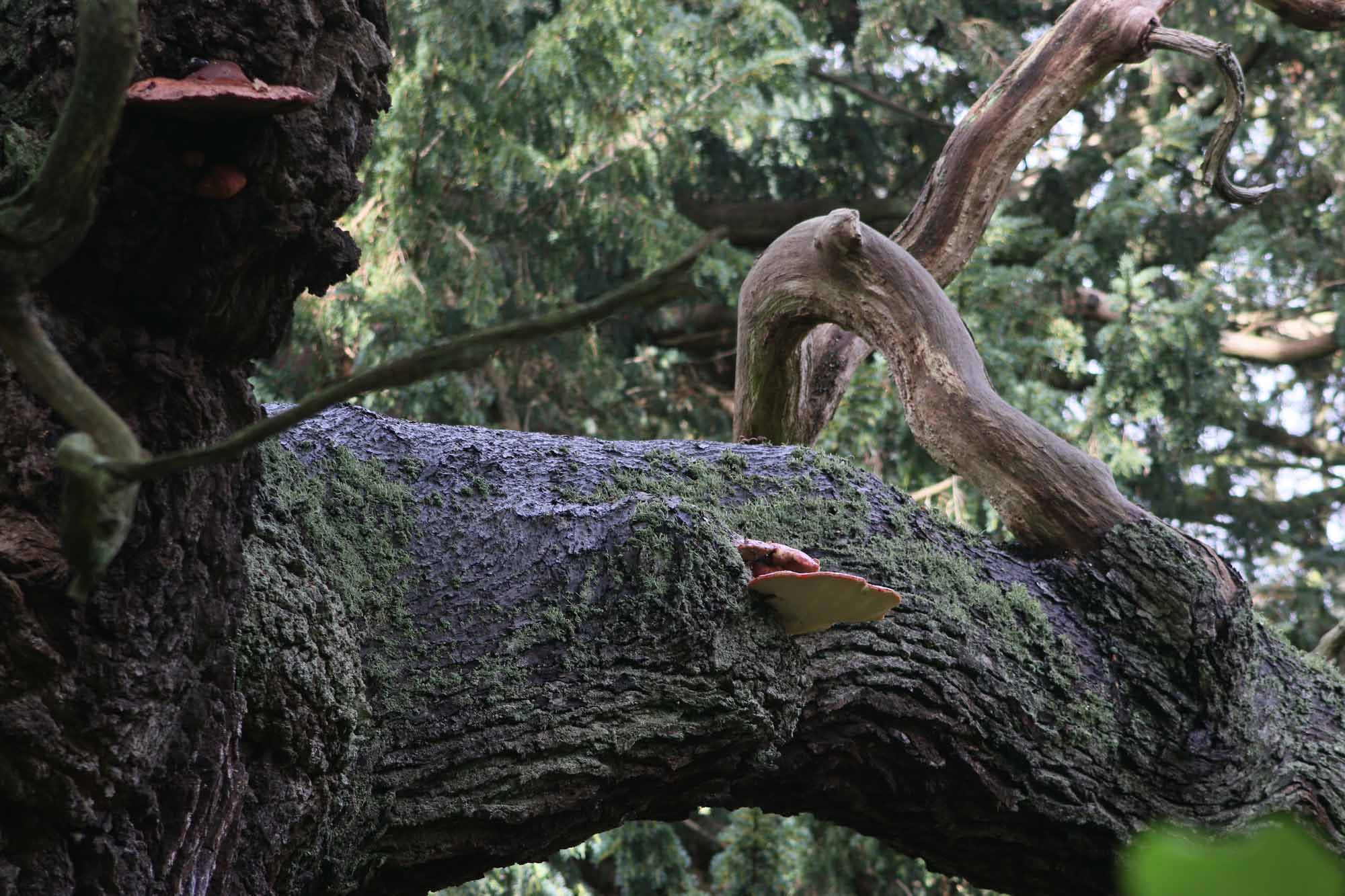
...sometimes in several different places
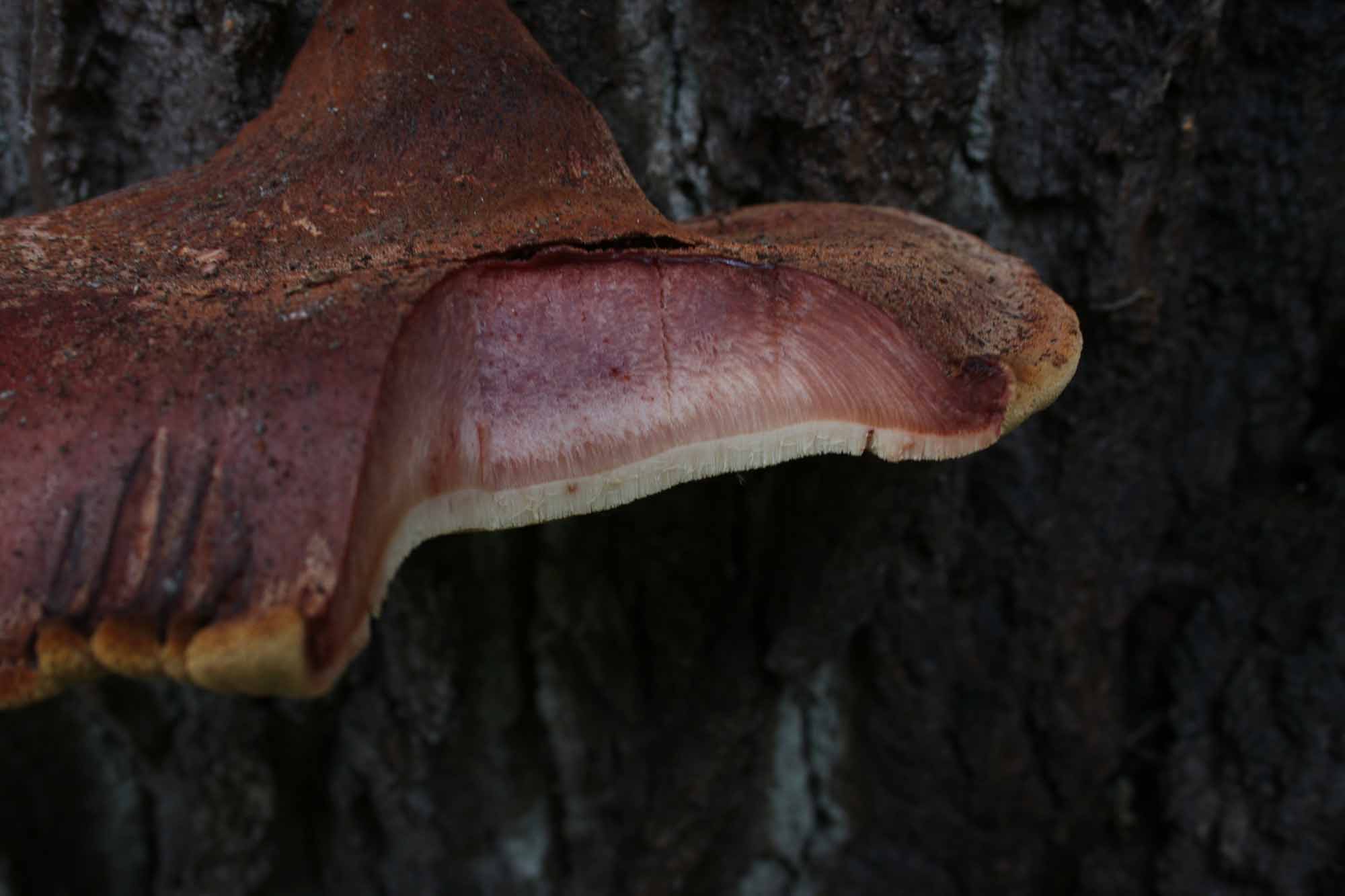
A beefsteak bracket with a section cut away, showing the colour and texture of the inside

Older beefsteak fungi, turning wetter and darker
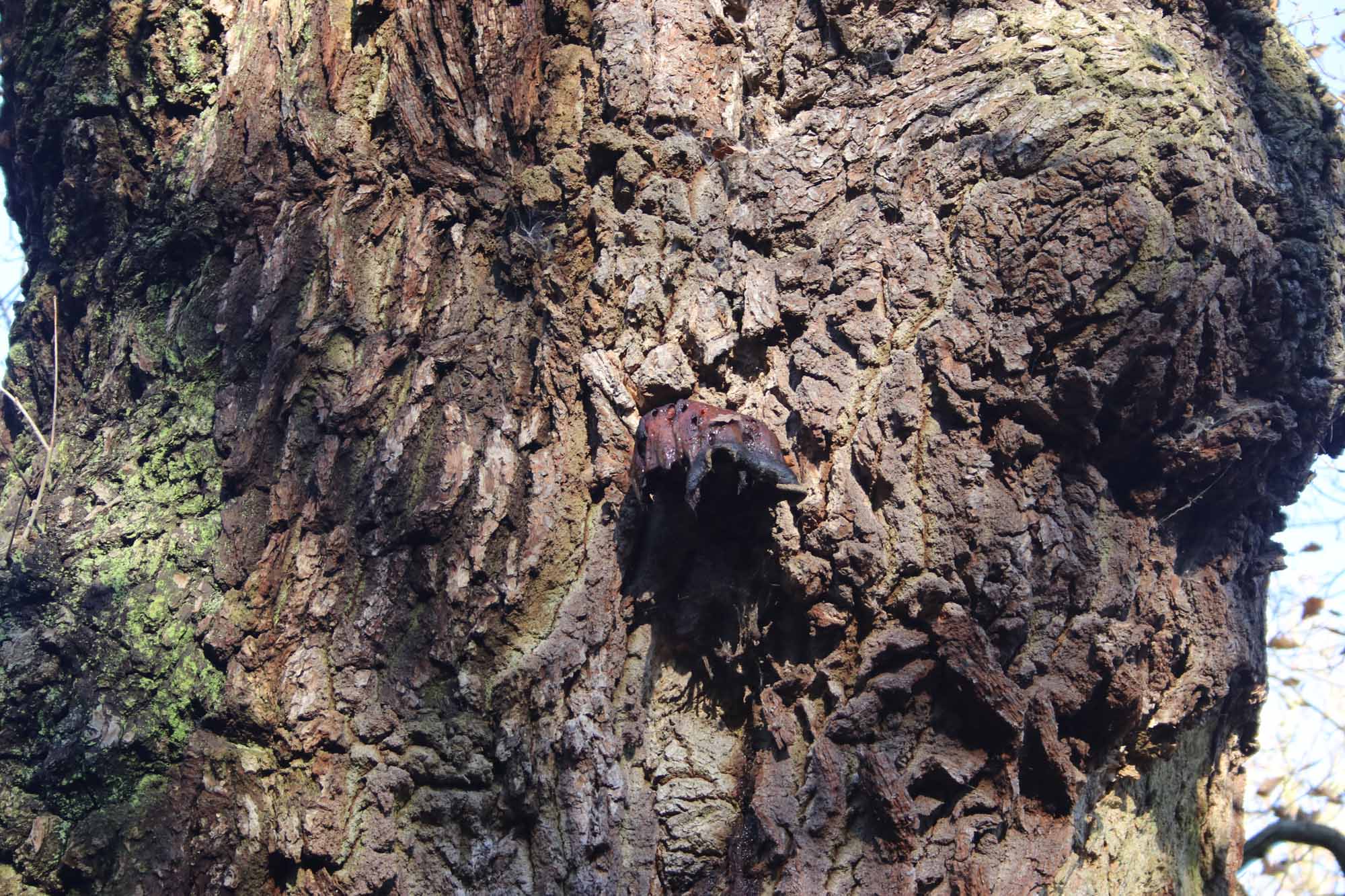
Older beefsteak fungi, turning wetter and darker
Dryad's saddle (Polyporus squamosus)
These are sandy coloured brackets with feathery markings on top, usually seen on broadleaved trees. They have a gentle, floppy appearance.
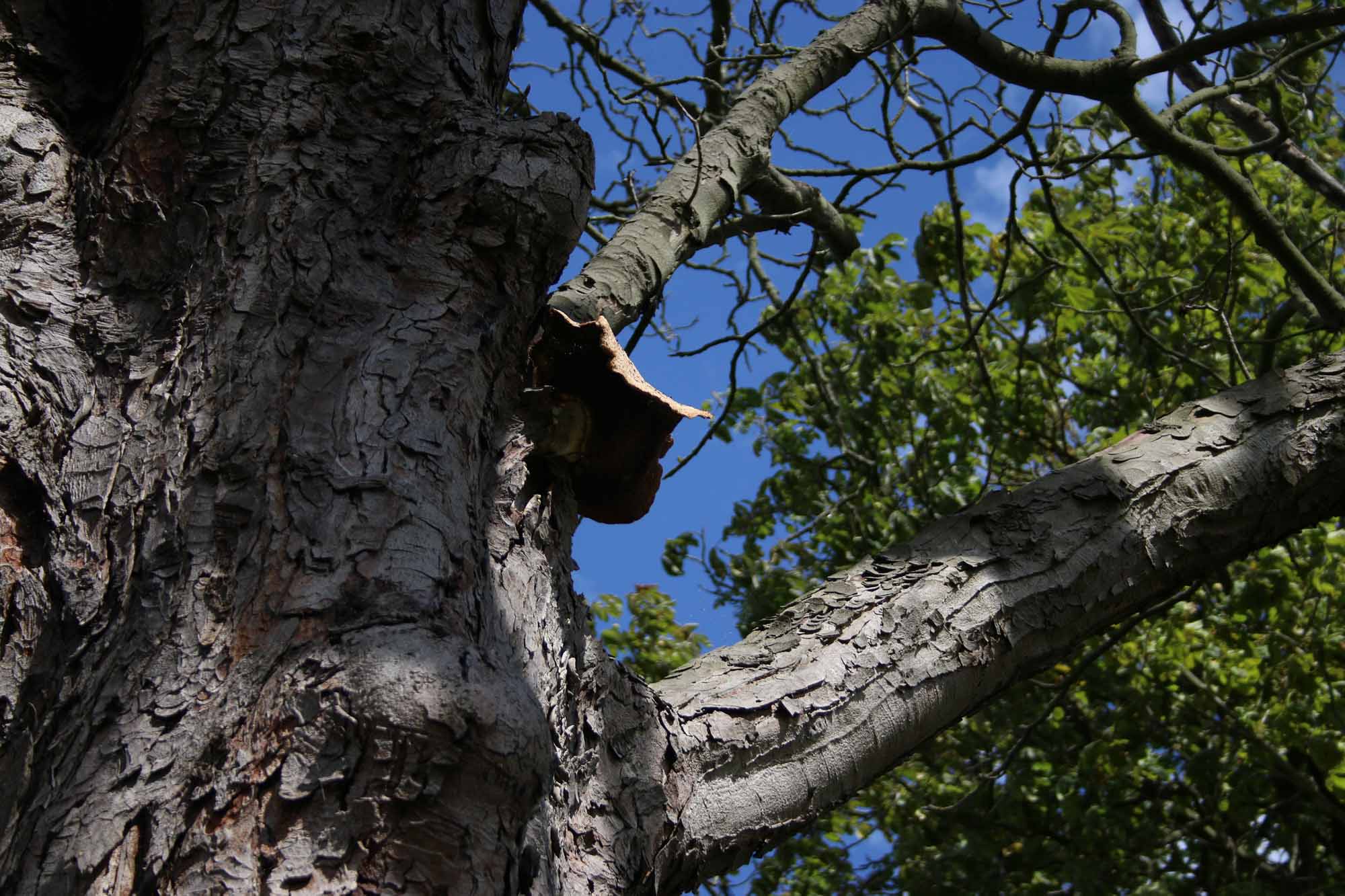
Dryad's saddle on a horse chestnut tree

Dryad's saddle on a horse chestnut tree
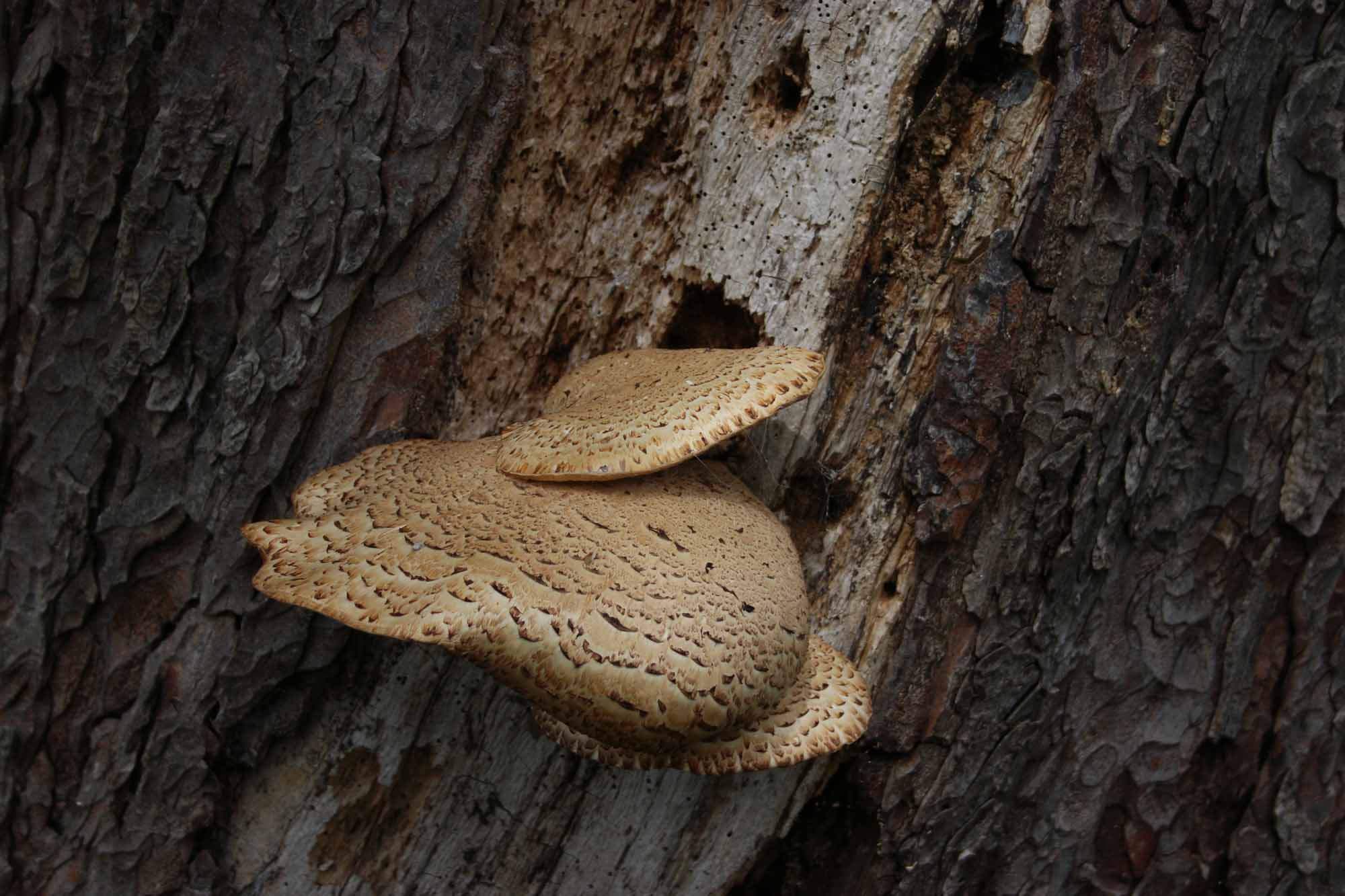
Dryad's saddle on a horse chestnut tree
Shaggy polypore (Inonotus hispidus)
This is usually seen at various heights on ash trees, either singly or in a small cluster. It starts as a thick bracket with a gingery velvety top and paler lower surface. As it ages, it turns black and falls off the tree. Often the black fallen brackets lie on the ground next to the tree.
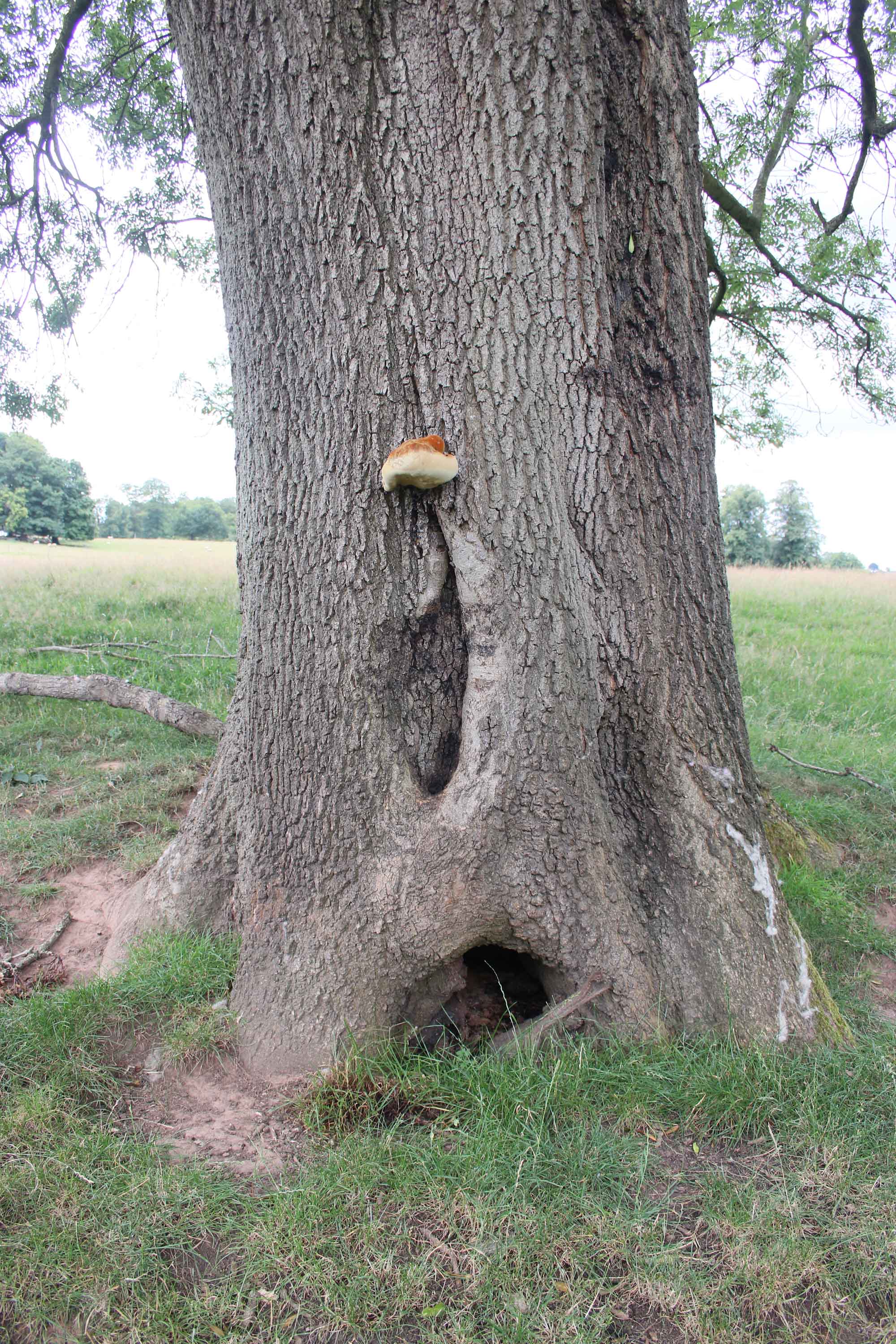
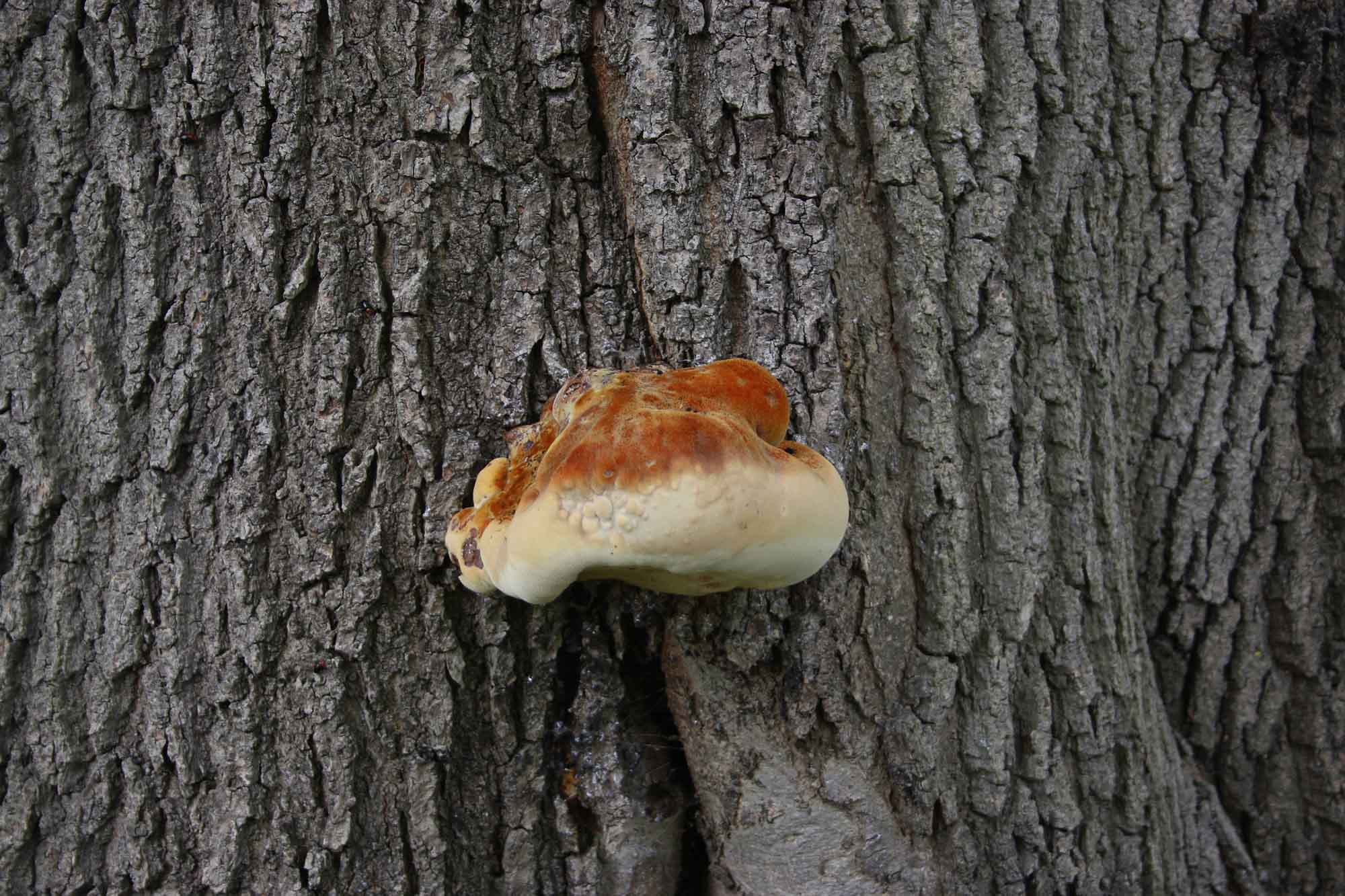
A fresh Inonotus hispidus bracket with its distinctive colouring
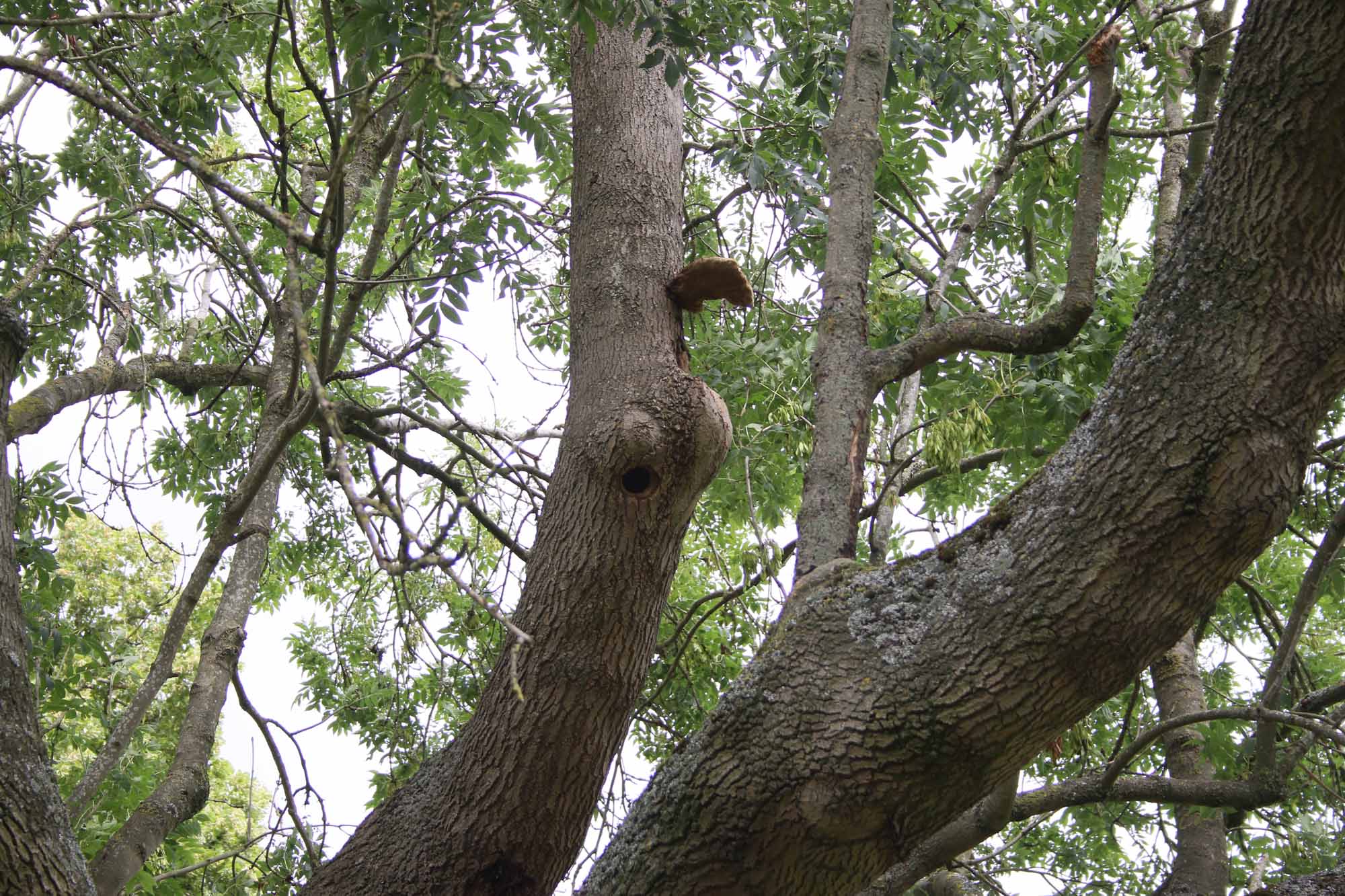
An Inonotus hispidus bracket on a high branch
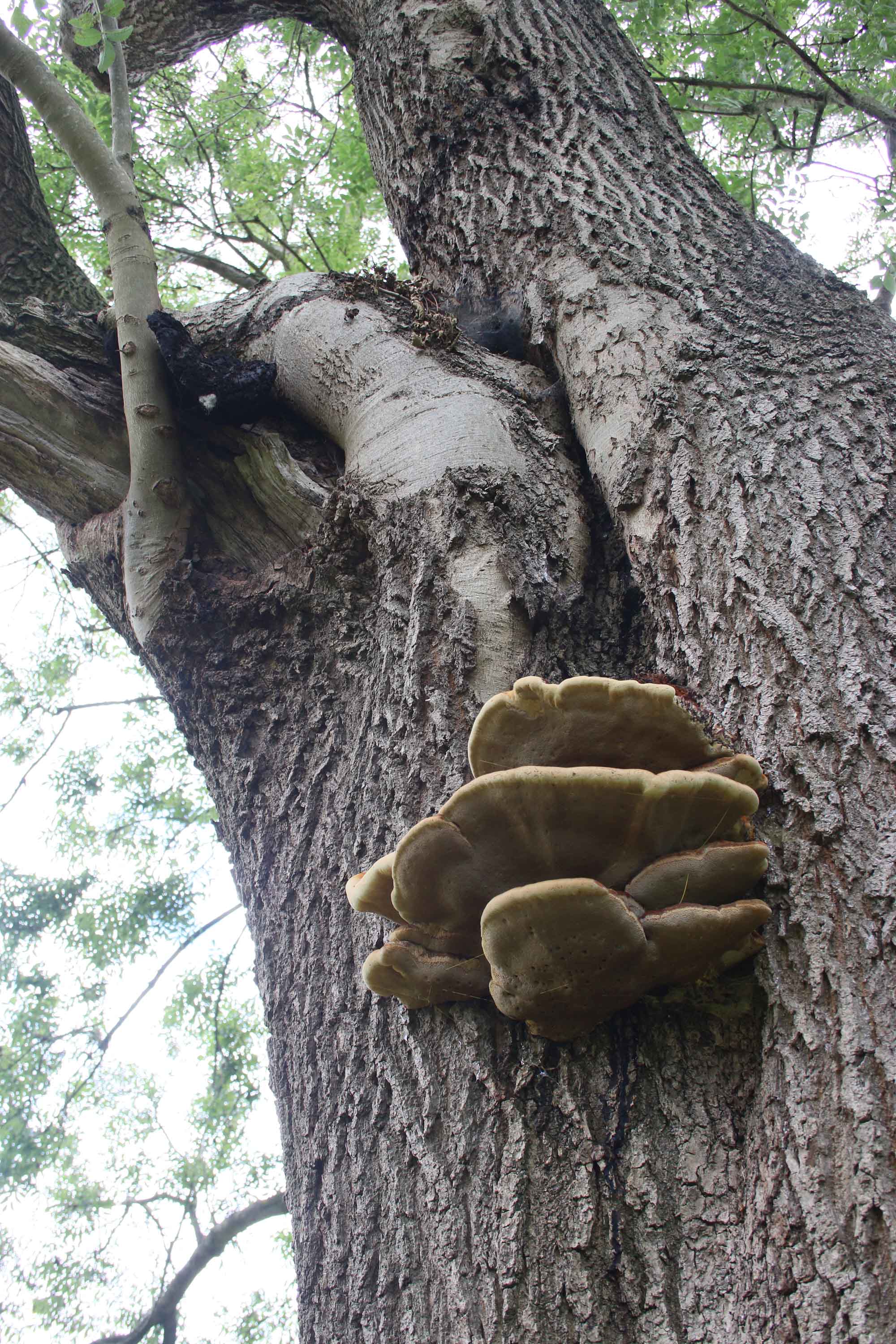
The same cluster of Inonotus hispidus brackets, in early August...
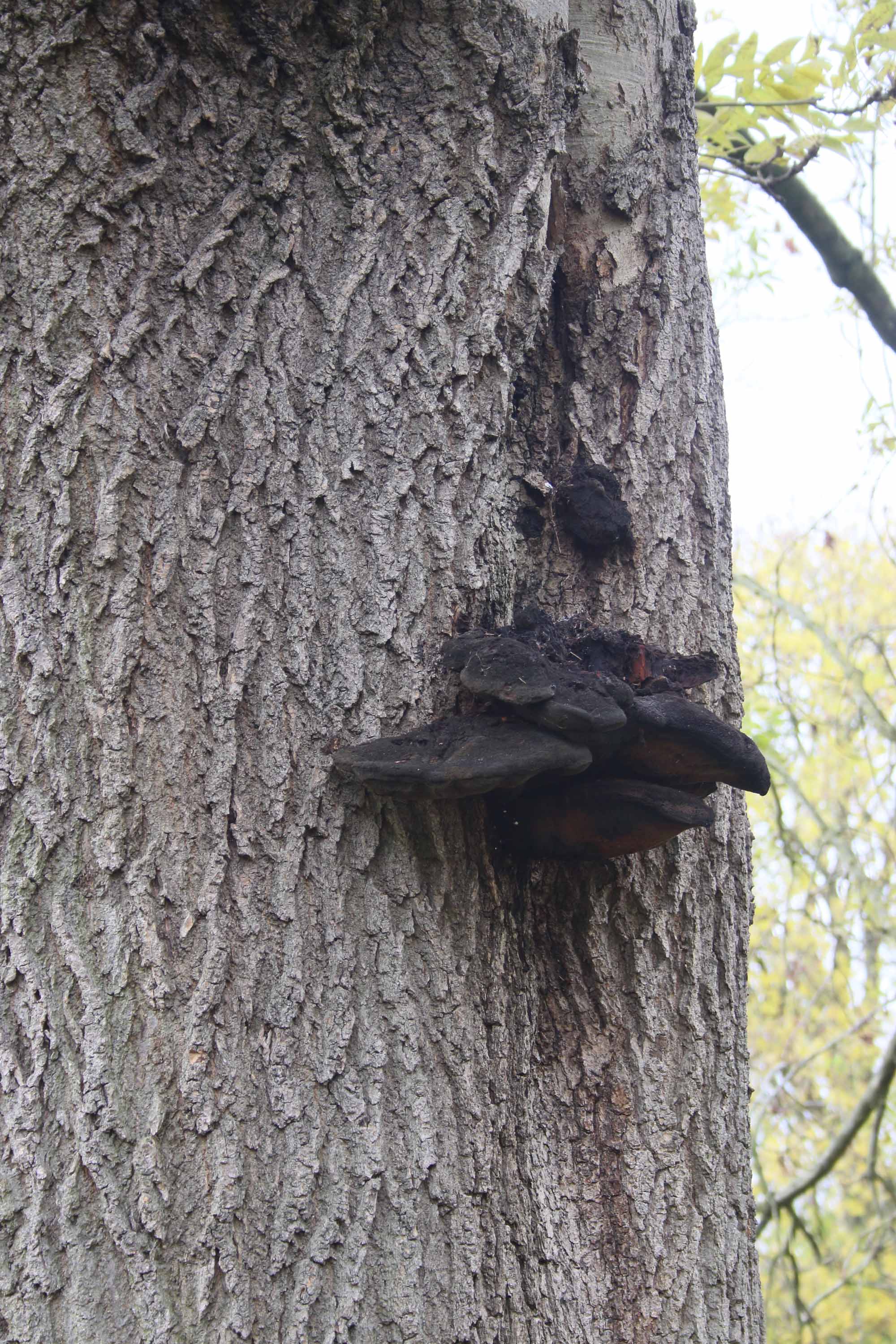
...and late October

Old black Inonotus hispidus brackets on the ground next to ash trees
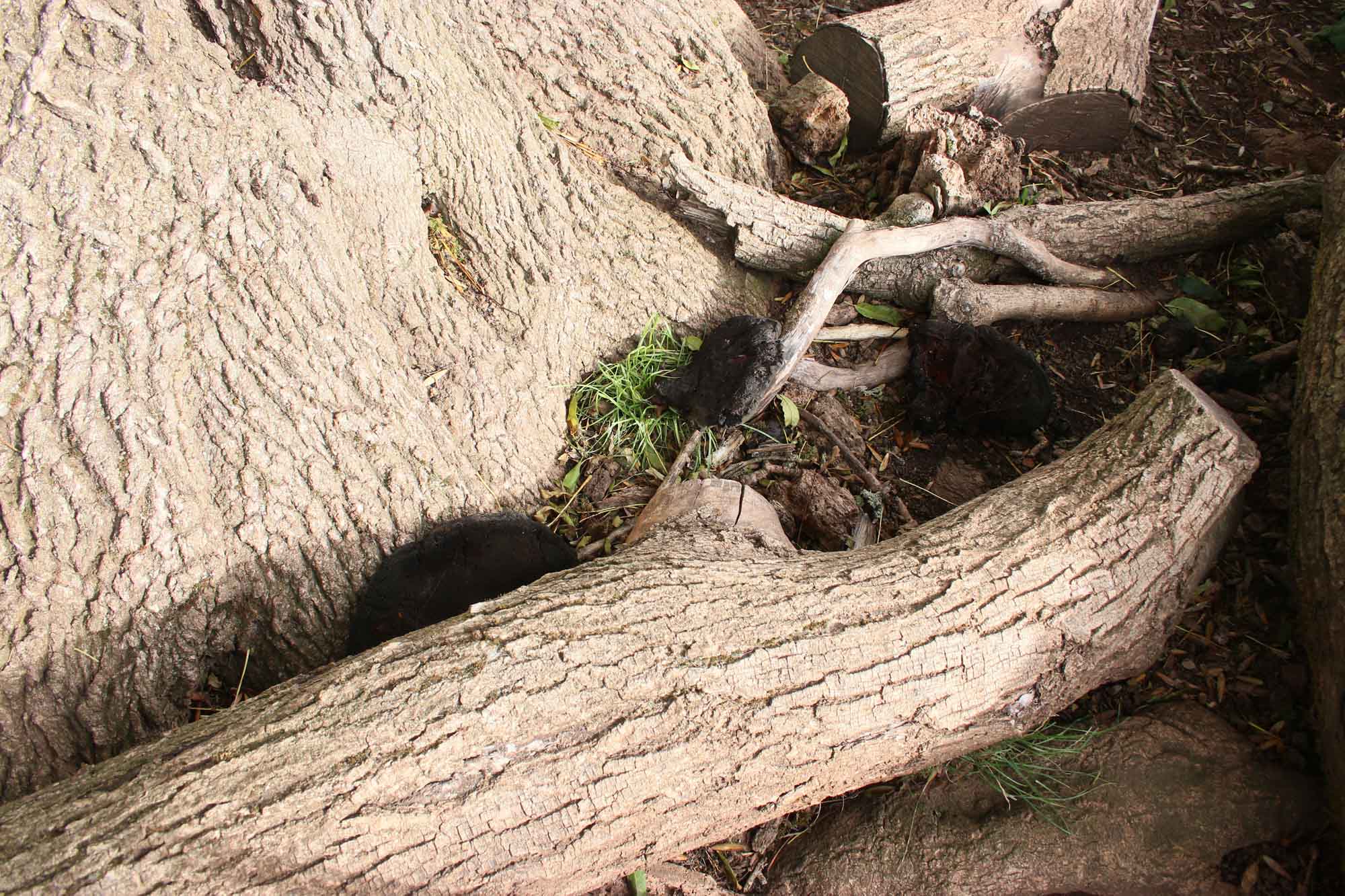
Old black Inonotus hispidus brackets on the ground next to ash trees
Ganoderma (Ganoderma applanatum, Ganoderma australe)
Unlike all the above bracket fungi, this has a perennial fruiting body. It has a tough texture, and new layers are added to the same bracket each year. It grows on broadleaved trees. Personally, I've seen this on many species: oak, ash, beech, birch, lime and horse chestnut, usually (but not always) quite low on the tree, sometimes growing on the inside hollow of a tree.
The lower surface can appear creamy or white, and the upper surface can sometimes look as though it has been dusted with cocoa powder - these are in fact the brown spores.

Ganoderma on beech trees

Ganoderma on beech trees
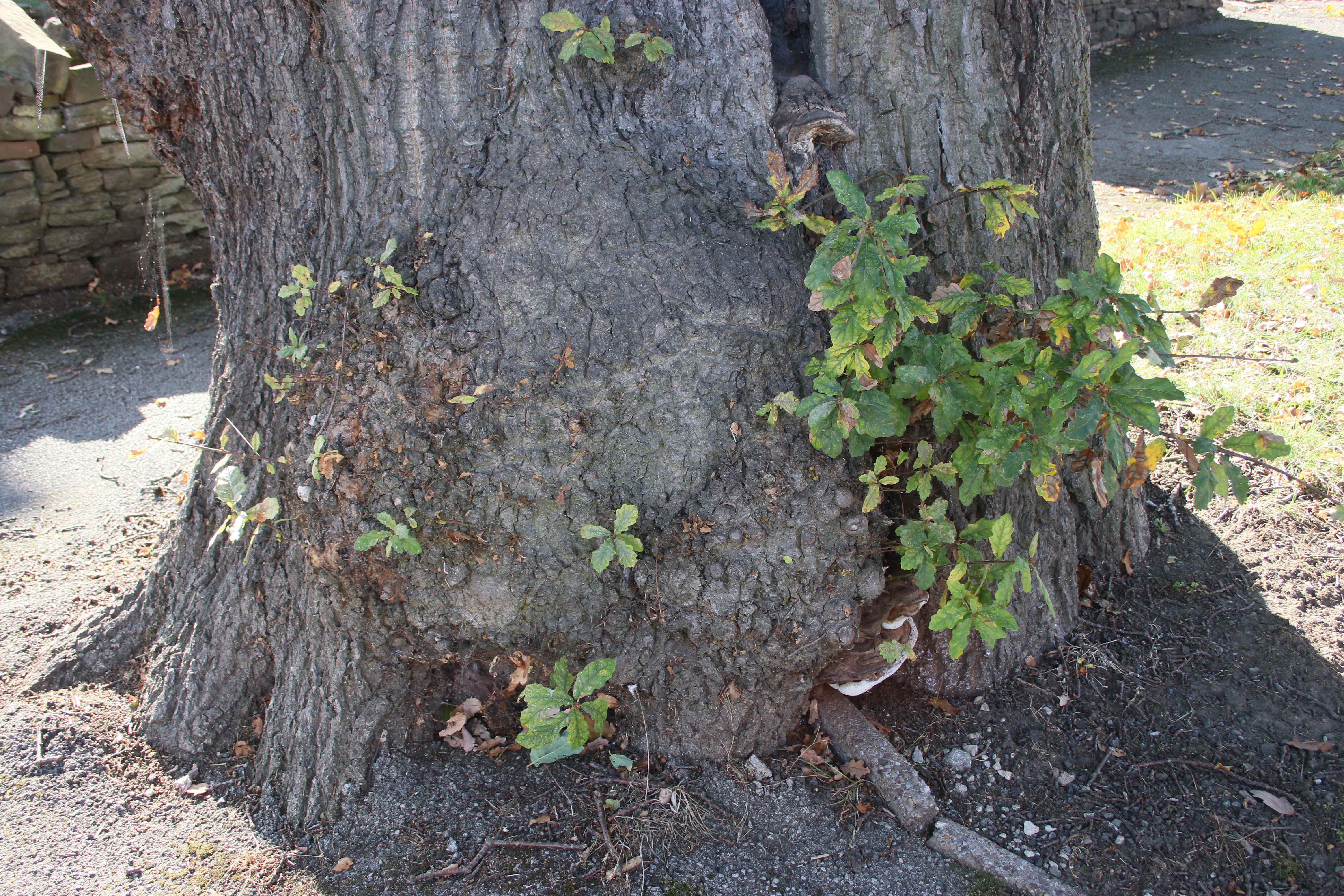
Ganoderma on oak trees
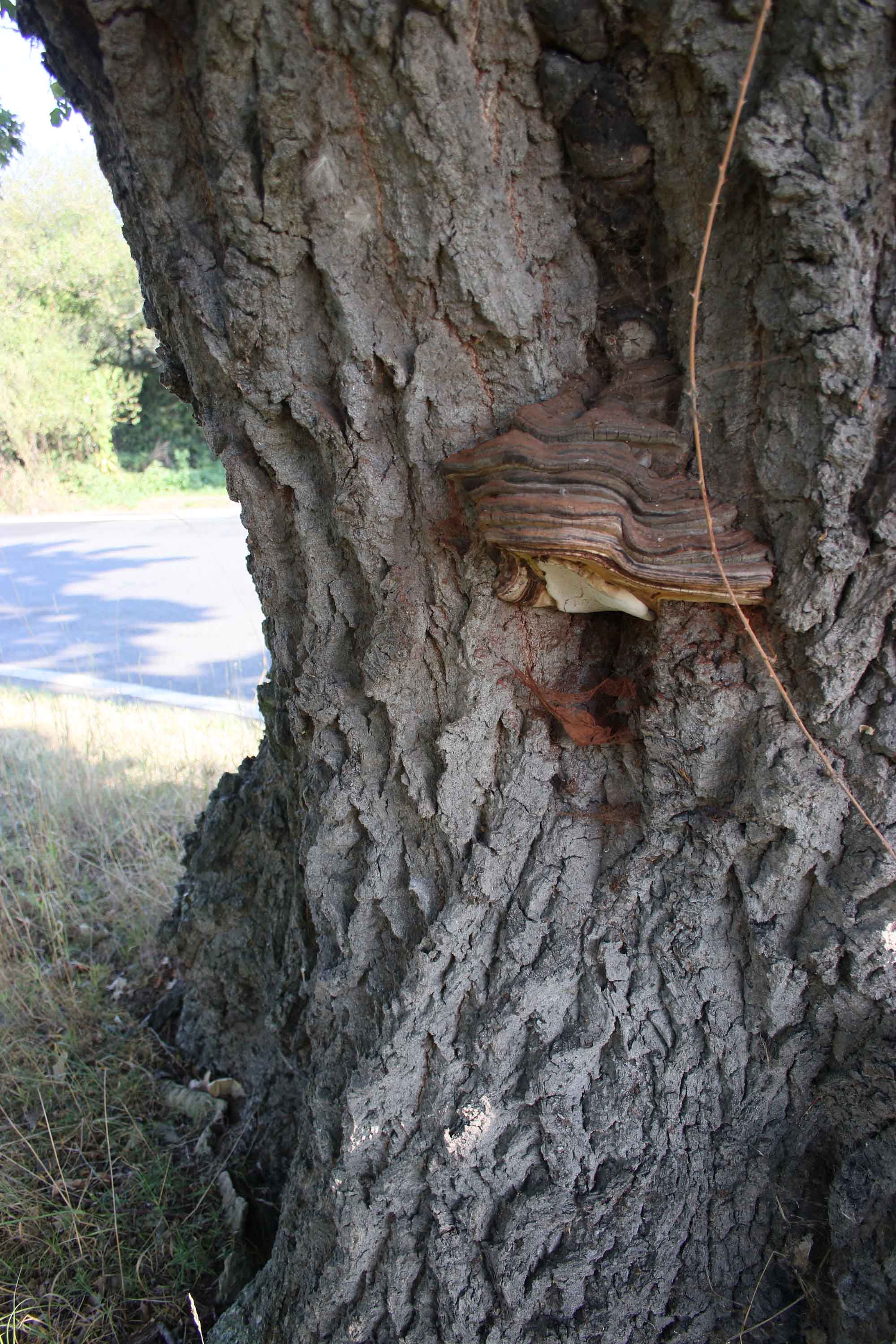
Ganoderma on oak trees

Ganoderma on a fallen dead oak
More thoughts
Hopefully this gives a better idea of what the more common tree fungi look like. It's interesting to also think about what they're doing there on the tree. The fungus itself is present within the tree all year round and may have been present for quite some time before producing what we would call the fungus. The fungus we see is technically the fruiting body of the fungus, much like an apple is the fruit of an apple tree. It's there to produces spores, which then are carried in the air to other trees.
Within the tree, fungi specialise in different types of decay. Beefsteak fungus, for example, is associated with brown rot of the heartwood, and you can see this when perhaps a branch falls, revealing the inside of the trunk. The exposed heartwood, rather than looking pale, appears a reddish brown. Over time, the structure of the wood becomes cuboid, then crumbly and powdery.

Brown rot seen inside oak branches

Brown rot seen inside oak branches
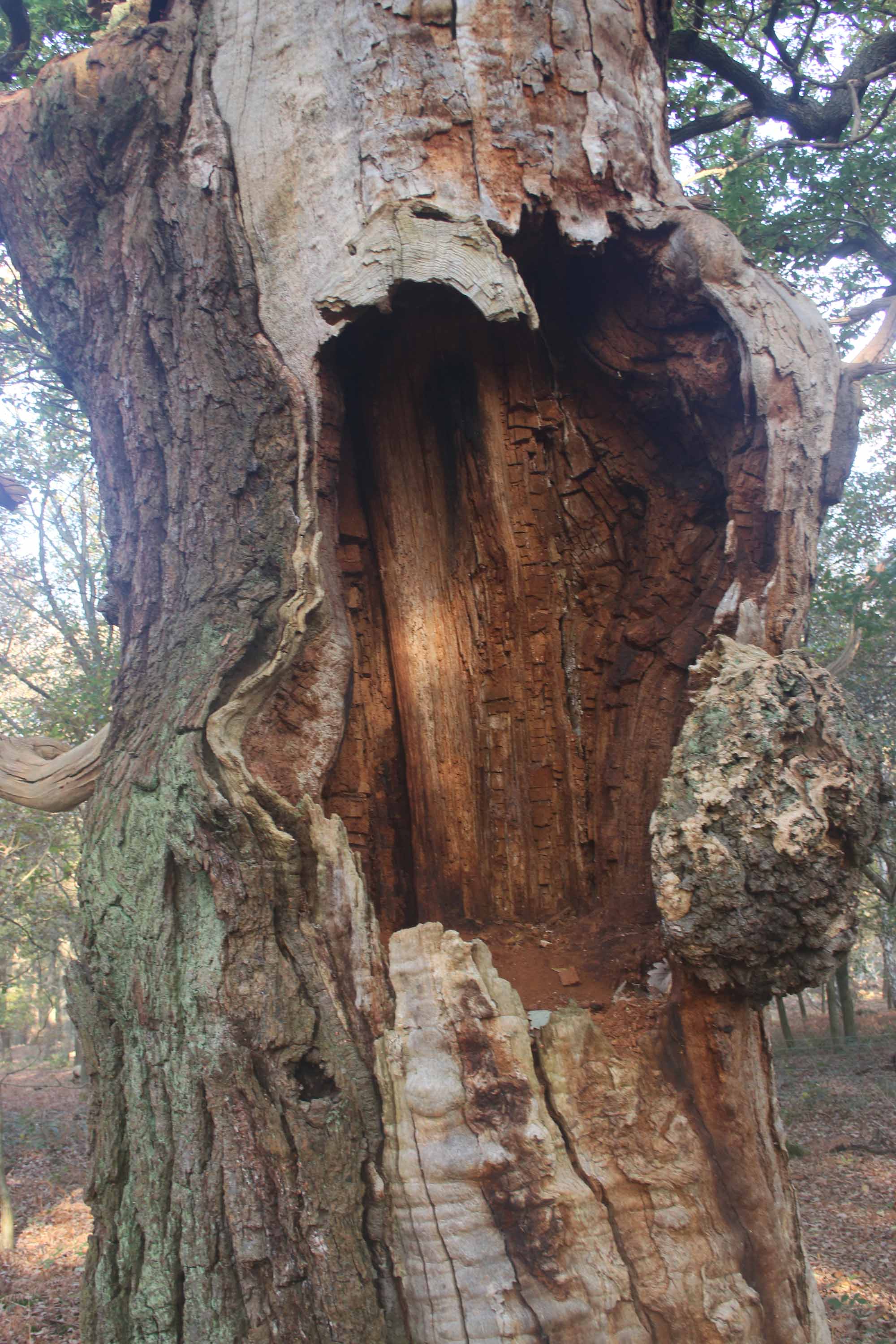
Brown rot visible in this cavity...
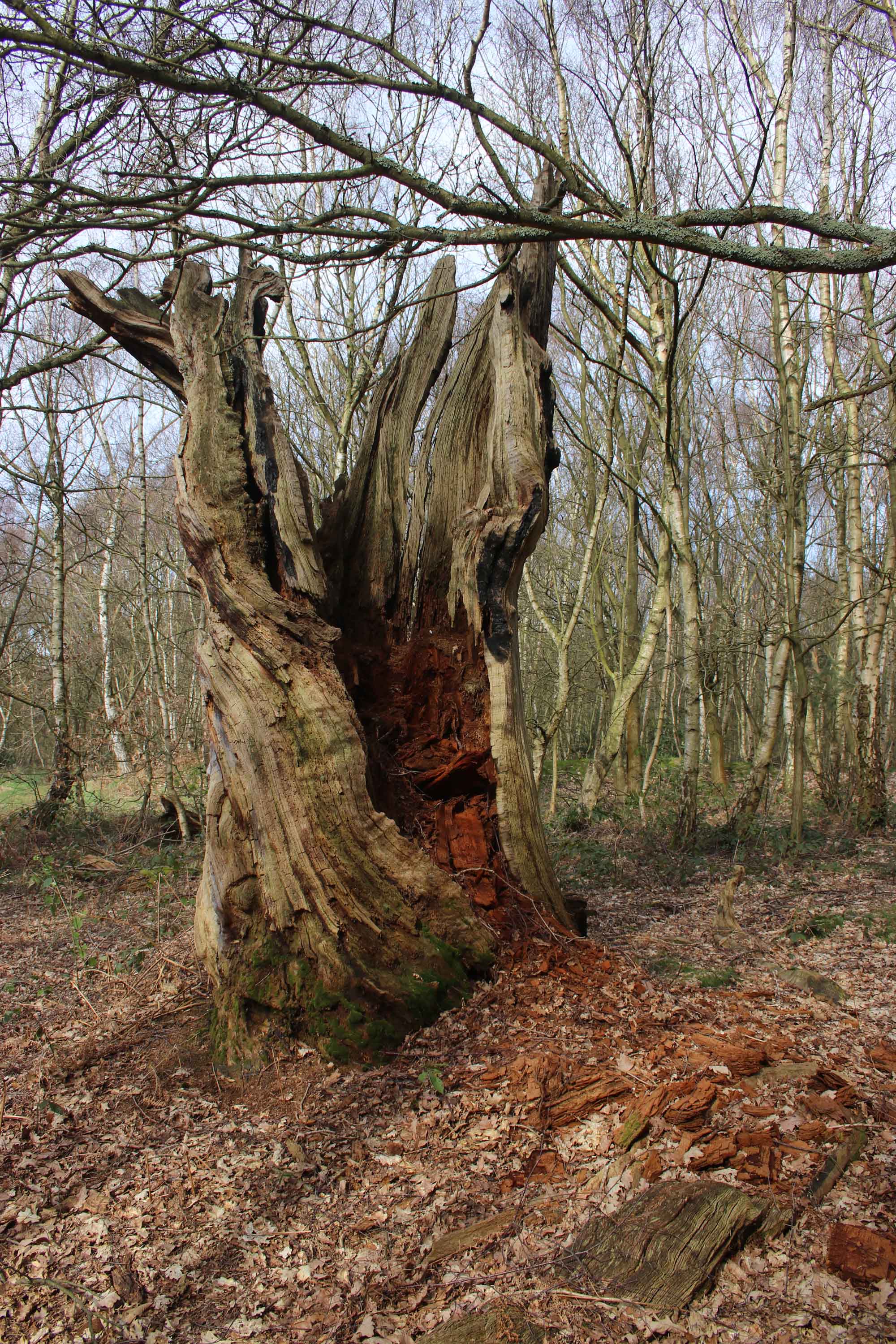
...and spilling out of this dead hollow trunk
Brown rot is typically associated with veteran and ancient trees, and you may have noticed trees with this when you're out and about. As the wood is broken down and the tree or its branches become hollow, it's not necessarily a bad thing. It's a key part of a tree's life, in becoming veteran and ancient. The inner tree with brown rot becomes a niche habitat for very specialised invertebrates. Also, as the substance of the tree decays and changes, it becomes repurposed and available again, rather than being locked in place as wood. So fungi is about more than fungi really!
